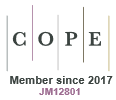Zoonotic risks: Salmonella and Campylobacter in reptiles
Andrea R. McWhorter A * and Harriet Whiley B CA
B
C

Andrea McWhorter is a microbiologist specialising in poultry health and zoonotic pathogens, particularly Salmonella and Campylobacter. Her research also extends to understanding the transmission of foodborne pathogens from farms to the food supply chain, leading to human disease. She collaborates closely with the egg and chicken meat industries to address the challenges of improving bird health and mitigating zoonotic bacteria in food. |

Harriet Whiley is a professor in environmental health and deputy director of the ARC Industrial Transformation Training Centre for Biofilm Research and Innovation. As an environmental microbiologist and environmental health officer her research is aimed at informing design, management and regulatory guidelines to protect human health from pathogens present in the environment. Her research areas include infection control, biofilms, water quality, food safety and risk assessment. |
Abstract
Reptiles are increasingly popular as exotic pets worldwide due to their unique characteristics, species diversity and relatively low maintenance requirements compared to other pets. However, their role as reservoirs for zoonotic pathogens, particularly Salmonella and Campylobacter, presents significant public health challenges. Transmission occurs through direct contact with reptiles, contaminated surfaces or improper hygiene practices, with vulnerable populations being particularly at risk. The prevalence of Salmonella in reptiles varies widely, ranging from 30 to 75.8% in captive populations to 8–14% in wild populations, although research on Campylobacter remains limited. The exotic pet trade, including international imports of reptiles, has further amplified concerns over zoonotic disease transmission and the spread of antibiotic-resistant strains. Effective prevention strategies, such as hygiene education, proper habitat management and regulatory measures, are critical to mitigating these risks.
Keywords: campylobacteriosis, pet ownership, public health, reptiles, salmonellosis, snakes, zoonoses.
 Andrea McWhorter is a microbiologist specialising in poultry health and zoonotic pathogens, particularly Salmonella and Campylobacter. Her research also extends to understanding the transmission of foodborne pathogens from farms to the food supply chain, leading to human disease. She collaborates closely with the egg and chicken meat industries to address the challenges of improving bird health and mitigating zoonotic bacteria in food. |
 Harriet Whiley is a professor in environmental health and deputy director of the ARC Industrial Transformation Training Centre for Biofilm Research and Innovation. As an environmental microbiologist and environmental health officer her research is aimed at informing design, management and regulatory guidelines to protect human health from pathogens present in the environment. Her research areas include infection control, biofilms, water quality, food safety and risk assessment. |
References
1 Auliya M et al. (2016) Trade in live reptiles, its impact on wild populations, and the role of the European market. Biol Conserv 204, 103-119.
| Crossref | Google Scholar |
2 Howell TJ et al. (2020) Self‐reported snake management practices among owners in Victoria, Australia. Vet Rec 187, 114.
| Crossref | Google Scholar | PubMed |
3 Valdez JW (2021) Using Google trends to determine current, past, and future trends in the reptile pet trade. Animals 11, 676.
| Crossref | Google Scholar | PubMed |
4 Masila NM (2020) Zoonotic and public health implications of Campylobacter species and squamates (lizards, snakes and amphisbaenians). Pathogens 9, 799.
| Crossref | Google Scholar | PubMed |
5 Whiley H et al. (2017) A review of Salmonella and squamates (lizards, snakes and amphisbians): implications for public health. Pathogens 6, 38.
| Crossref | Google Scholar | PubMed |
7 Lamas A et al. (2018) A comprehensive review of non-enterica subspecies of Salmonella enterica. Microbiol Res 206, 60-73.
| Crossref | Google Scholar | PubMed |
8 Pees M et al. (2023) Salmonella in reptiles: a review of occurrence, interactions, shedding and risk factors for human infections. Front Cell Dev Biol 11, 1251036.
| Crossref | Google Scholar | PubMed |
9 Bjelland AM et al. (2020) Prevalence of Salmonella serovars isolated from reptiles in Norwegian zoos. Acta Vet Scand 62, 3.
| Crossref | Google Scholar |
10 Chen C-Y et al. (2010) Prevalence and antimicrobial susceptibility of salmonellae isolates from reptiles in Taiwan. J Vet Diagn Invest 22, 44-50.
| Crossref | Google Scholar | PubMed |
11 Scheelings TF et al. (2011) Prevalence of Salmonella in Australian reptiles. J Wildl Dis 47, 1-11.
| Crossref | Google Scholar | PubMed |
12 Pasmans F et al. (2005) Characterization of Salmonella isolates from captive lizards. Vet Microbiol 110, 285-291.
| Crossref | Google Scholar | PubMed |
13 McWhorter A et al. (2021) In vitro invasiveness and antimicrobial resistance of Salmonella enterica subspecies isolated from wild and captive reptiles. Zoonoses Public Health 68, 402-412.
| Crossref | Google Scholar | PubMed |
14 Gorski L et al. (2013) Diversity of pulsed-field gel electrophoresis pulsotypes, serovars, and antibiotic resistance among Salmonella isolates from wild amphibians and reptiles in the California central coast. Foodborne Pathog Dis 10, 540-548.
| Crossref | Google Scholar | PubMed |
15 Parsons SK et al. (2015) Spatial variation and survival of Salmonella enterica subspecies in a population of Australian sleepy lizards (Tiliqua rugosa). Appl Environ Microbiol 81, 5804-5811.
| Crossref | Google Scholar | PubMed |
16 Saelinger CA et al. (2006) Prevalence of Salmonella spp. in cloacal, fecal, and gastrointestinal mucosal samples from wild North American turtles. J Am Vet Med Assoc 229, 266-268.
| Crossref | Google Scholar | PubMed |
17 Harker K et al. (2011) An outbreak of Salmonella Typhimurium DT191a associated with reptile feeder mice. Epidemiol Infect 139, 1254-1261.
| Crossref | Google Scholar | PubMed |
18 Kanagarajah S et al. (2018) Whole genome sequencing reveals an outbreak of Salmonella Enteritidis associated with reptile feeder mice in the United Kingdom, 2012–2015. Food Microbiol 71, 32-38.
| Crossref | Google Scholar | PubMed |
19 Marin C et al. (2018) Commercial frozen mice used by owners to feed reptiles are highly externally contaminated with Salmonella enteritidis PT8. Vector Borne Zoonotic Dis 18, 453-457.
| Crossref | Google Scholar | PubMed |
20 Parsons SK et al. (2011) Substructure within Salmonella enterica subsp. enterica isolates from Australian wildlife. Appl Environ Microbiol 77, 3151-3153.
| Crossref | Google Scholar | PubMed |
21 Lee P, Mackerras I (1955) Salmonella infections of Australian native animals. Aust J Exp Biol Med Sci 33, 117-125.
| Crossref | Google Scholar |
22 Costa D, Iraola G (2019) Pathogenomics of emerging Campylobacter species. Clin Microbiol Rev 32, e00072-18.
| Crossref | Google Scholar | PubMed |
23 Olvera-Ramírez AM et al. (2023) A systematic review on the role of wildlife as carriers and spreaders of Campylobacter spp. Animals 13, 1334.
| Crossref | Google Scholar | PubMed |
24 Gilbert MJ et al. (2014) Occurrence, diversity, and host association of intestinal Campylobacter, Arcobacter, and Helicobacter in reptiles. PLoS ONE 9, e101599.
| Crossref | Google Scholar | PubMed |
25 Whiley H et al. (2016) Detection of Campylobacter jejuni in lizard faeces from central Australia using quantitative PCR. Pathogens 6, 1.
| Crossref | Google Scholar | PubMed |
26 Knibbs LD et al. (2012) Vacuum cleaner emissions as a source of indoor exposure to airborne particles and bacteria. Environ Sci Technol 46, 534-542.
| Crossref | Google Scholar | PubMed |
27 Woodward DL et al. (1997) Human salmonellosis associated with exotic pets. J Clin Microbiol 35, 2786-2790.
| Crossref | Google Scholar | PubMed |
28 Smith KF et al. (2009) Reducing the risks of the wildlife trade. Science 324, 594-595.
| Crossref | Google Scholar | PubMed |
29 Casey CL et al. (2015) The carriage of antibiotic resistance by enteric bacteria from imported tokay geckos (Gekko gecko) destined for the pet trade. Sci Total Environ 505, 299-305.
| Crossref | Google Scholar | PubMed |
30 Hedley J et al. (2021) Antibiotic stewardship for reptiles. J Small Anim Pract 62, 829-839.
| Crossref | Google Scholar | PubMed |


